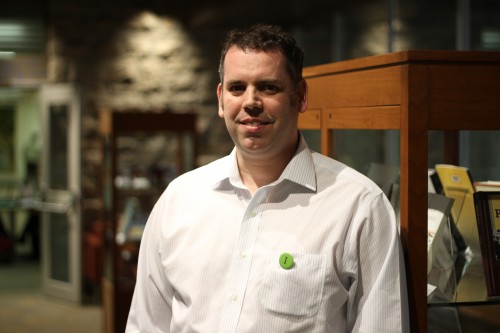Cultural mapping class partners students with city
A class in cultural heritage mapping offered by the U of S in partnership with the City of Saskatoon is helping students, and Saskatoon residents, look at the city from a very different perspective.
By Kris Foster By bringing together a wide array of disciplines, geography, history, urban planning, native studies, and art and art history, Andrew Dunlop, program director at the University Learning Centre, said students helped create a map of Saskatoon that highlighted the city's history, heritage and culture.
By bringing together a wide array of disciplines, geography, history, urban planning, native studies, and art and art history, Andrew Dunlop, program director at the University Learning Centre, said students helped create a map of Saskatoon that highlighted the city's history, heritage and culture.
"This is a great example of innovation in teaching and learning," explained Dunlop of the pilot class that ran in winter term 2012. "It addresses issues like student retention and engagement while exposing students to things they normally wouldn't see. The other side of it is it connects the university to the city and community in a much more tangible way."
For the five students who participated in the pilot, a typical week consisted of two formal lecture-style classes taught by experts with varied backgrounds. "One class, for example, might look at a cultural space from the Aboriginal perspective and the next would look from a geographic perspective," said Dunlop. Two other days consisted of students doing field research, looking at cultural and historic spaces in Saskatoon and applying what they learned in that week's classes. The final day of the week "is lab work on campus, in the library or in archives learning how to map the cultural heritage of the city."
When combined, he continued, all aspects of the course contribute to the wide range of skills and intellectual background required of cultural mapping. "This class focused on elements of culture and heritage that connect us to the early stories of Saskatoon and show us how we got from there to here," explained Dunlop, who with Keith Thor Carlson, special advisor on outreach and engagement in University Advancement and director of the Interdisciplinary Centre for Culture and Creativity, created the curriculum.
The City of Saskatoon was so pleased with the result that it hired three of the students as summer interns to work on various cultural heritage projects. "One student worked with the Broadway Business Improvement District on developing a website on the history of buildings on Broadway. The project resulted in various buildings on Broadway being labeled with QR codes that linked to a site with their history," he said.
Moving forward, Dunlop hopes to include even more disciplines in the course. "I would love to have engineers or plant scientists provide their perspectives. It all contributes to telling the story of Saskatoon from new ways. It helps connect people to this place."
Students will present their cultural heritage maps at an upcoming public seminar that has yet to be announced.

